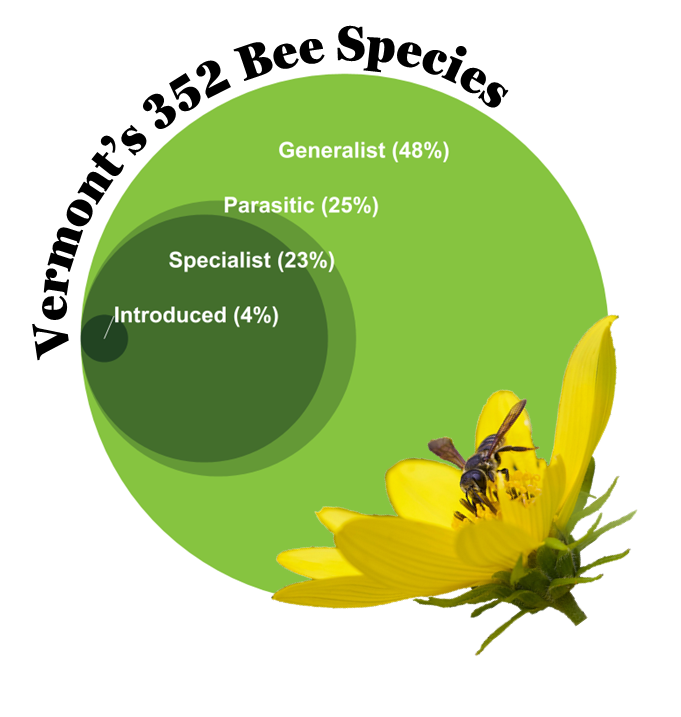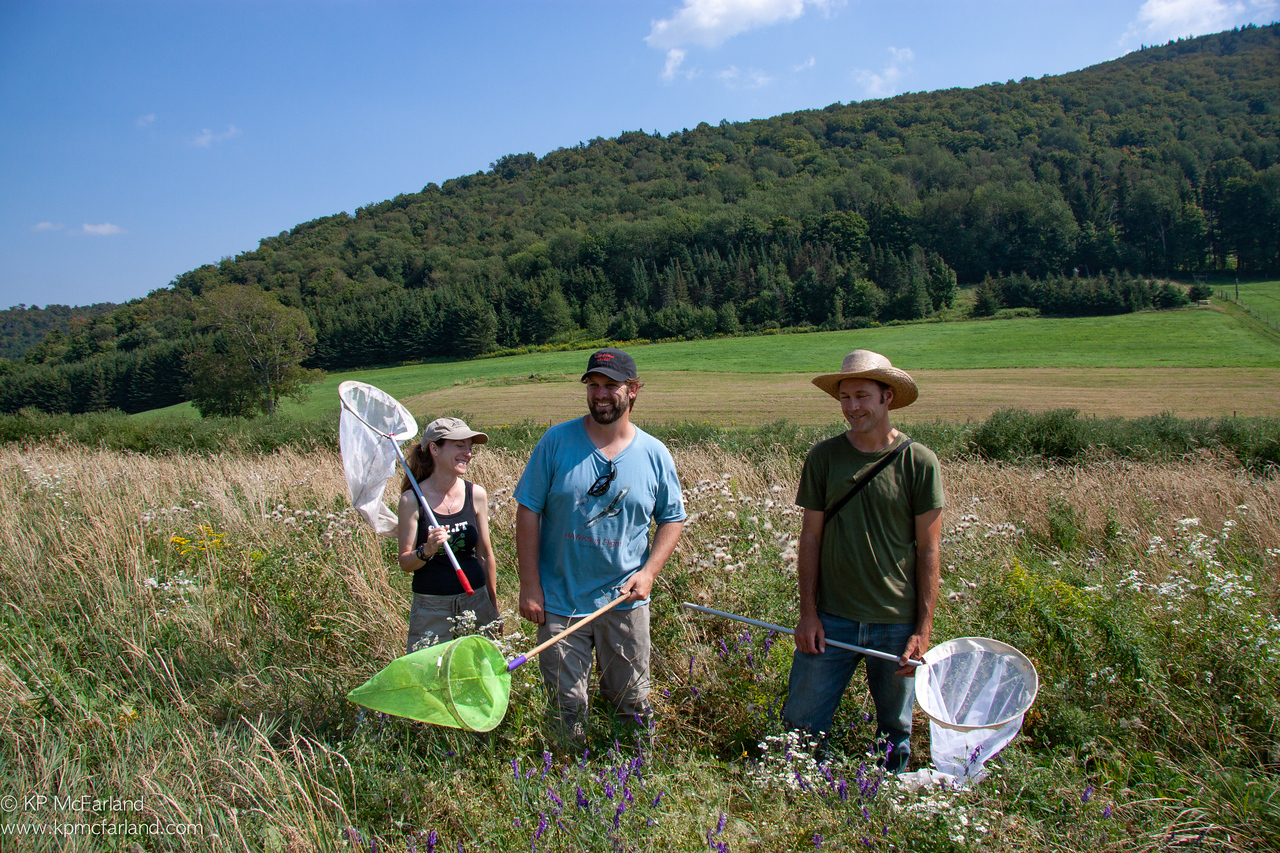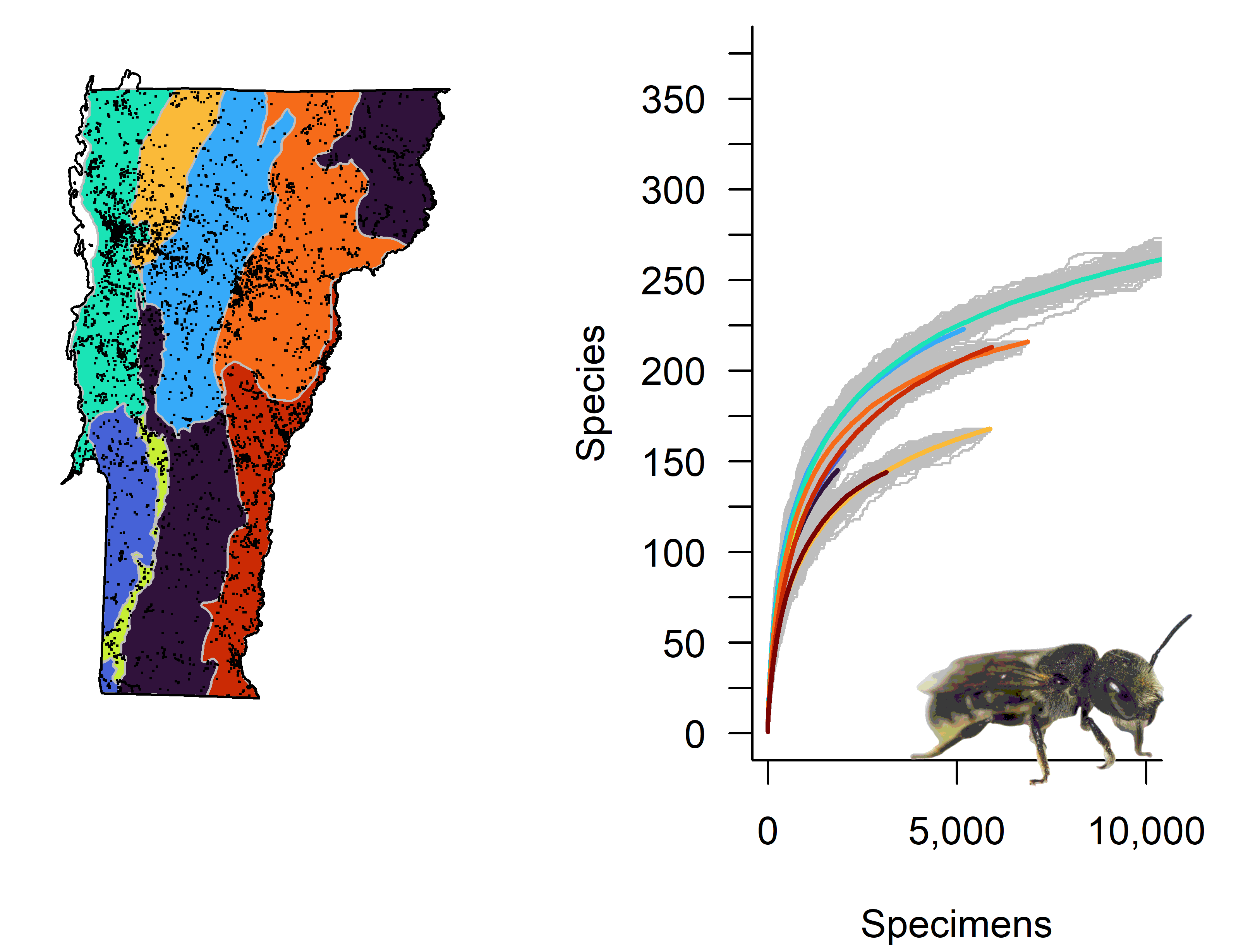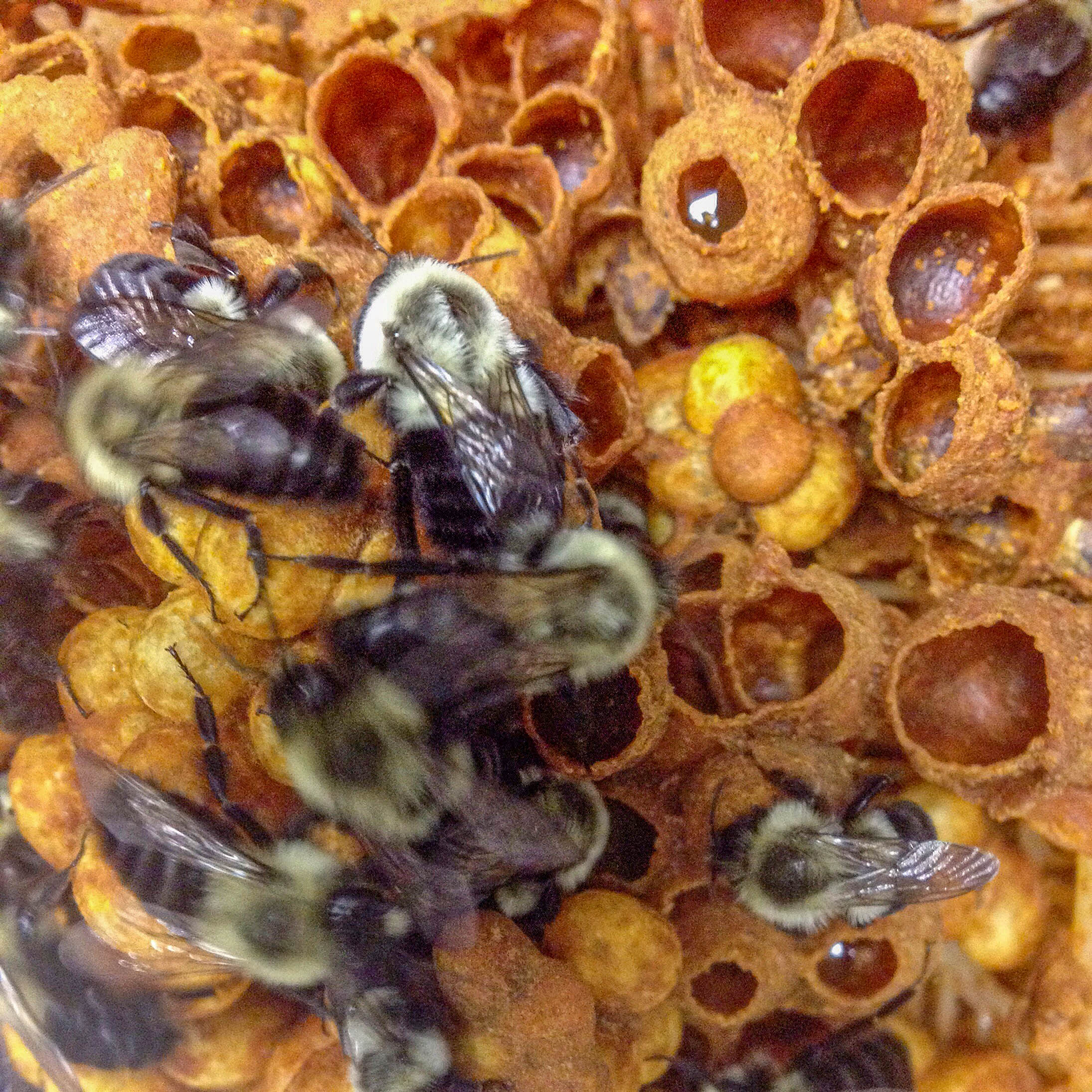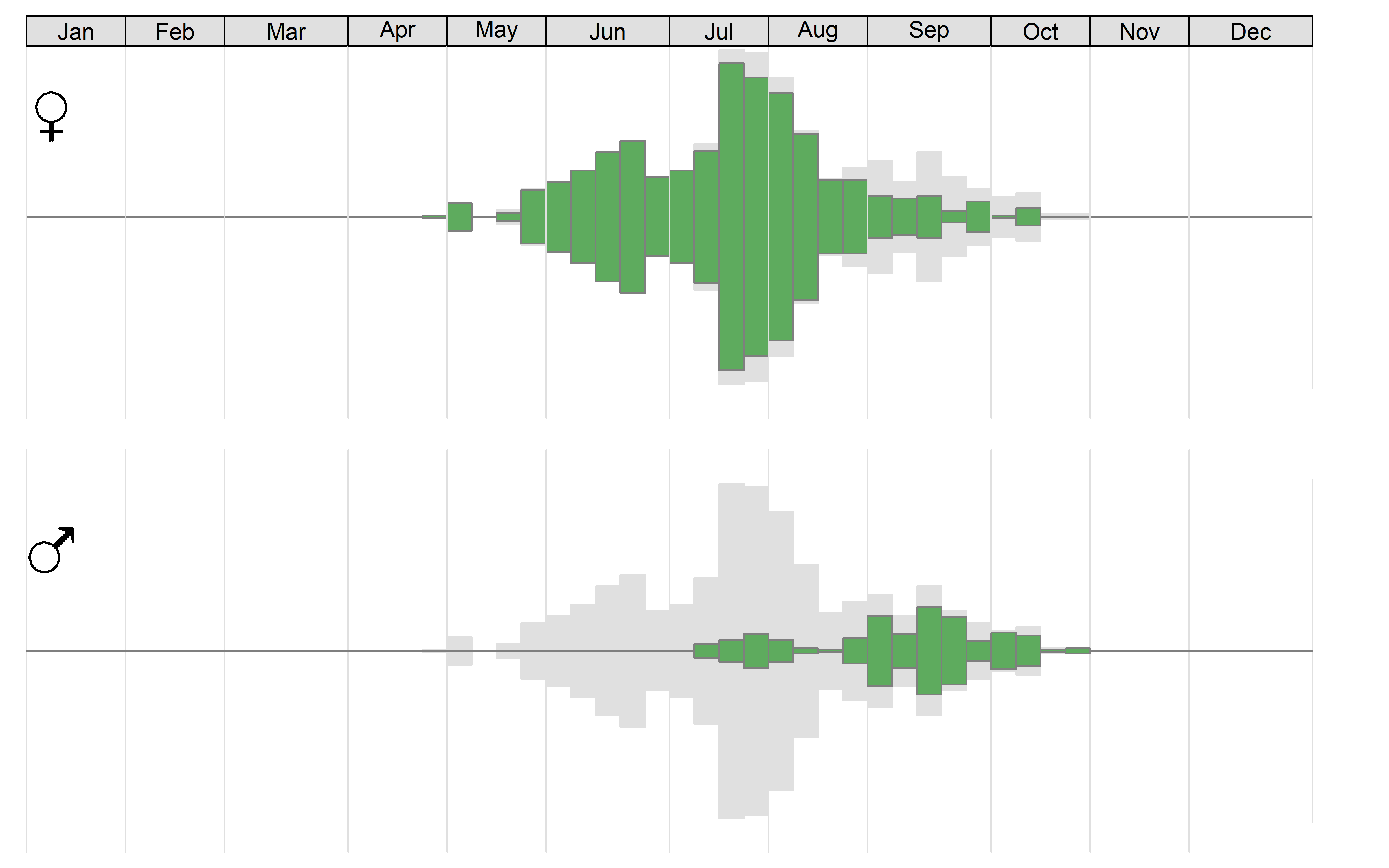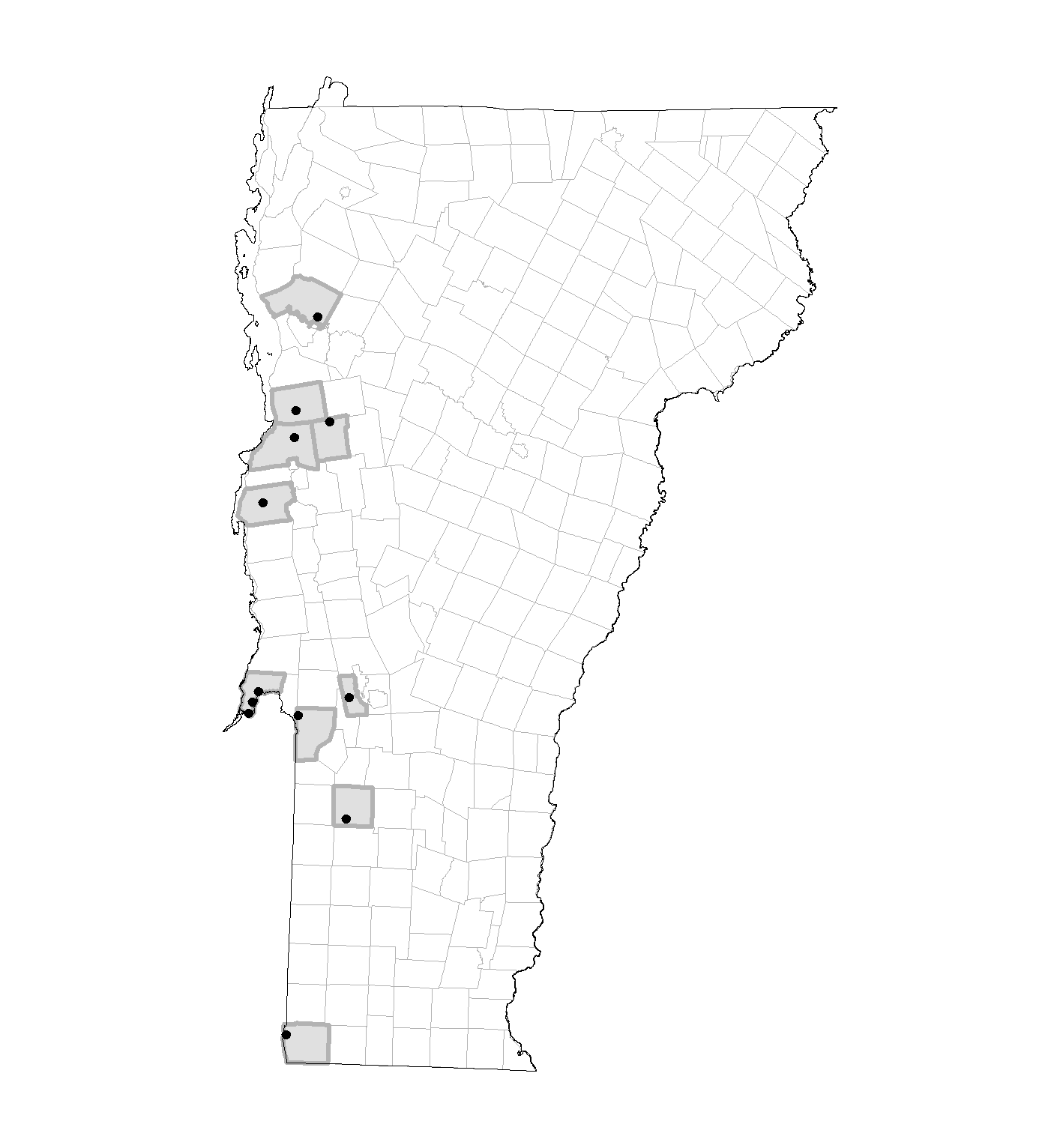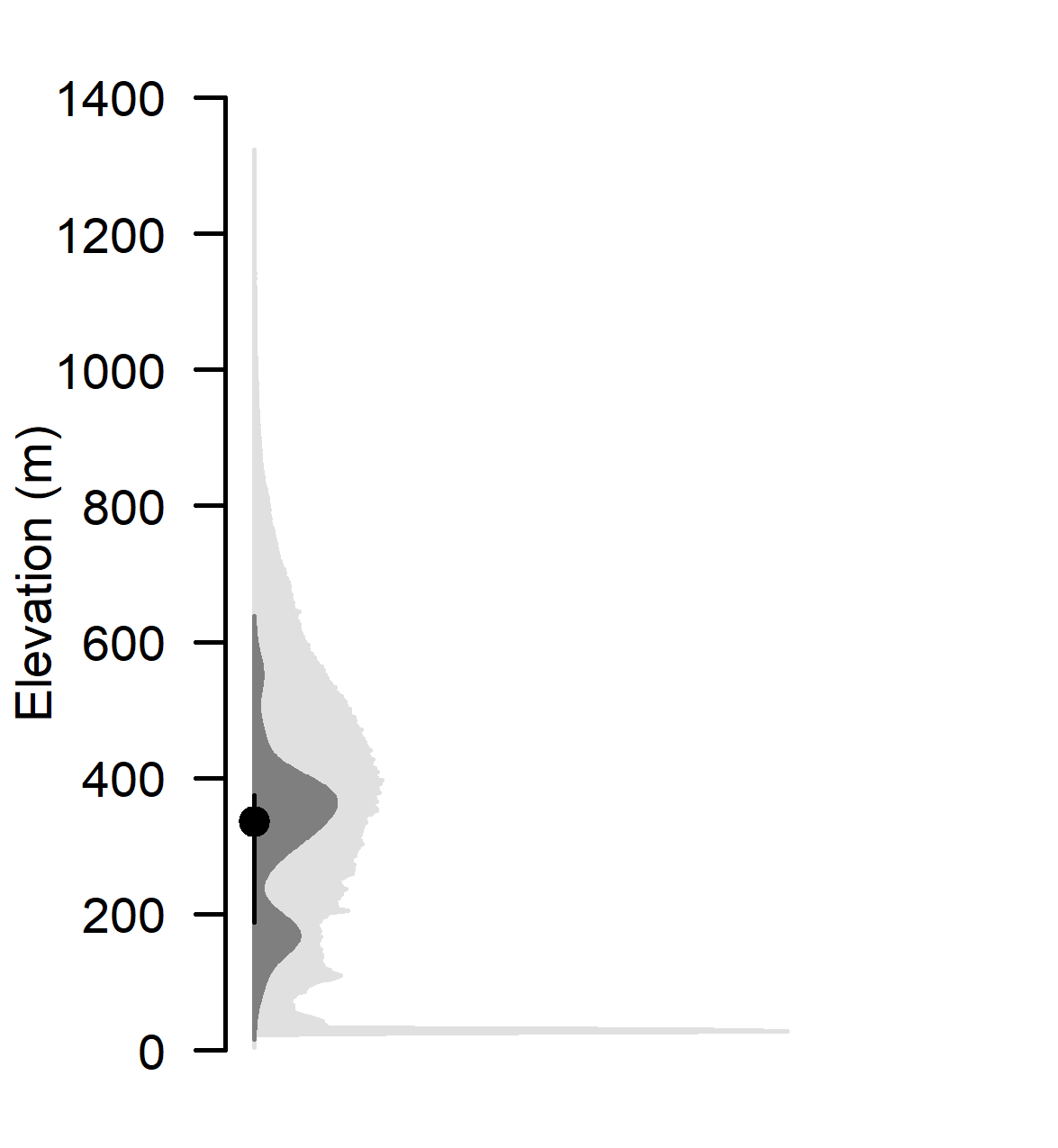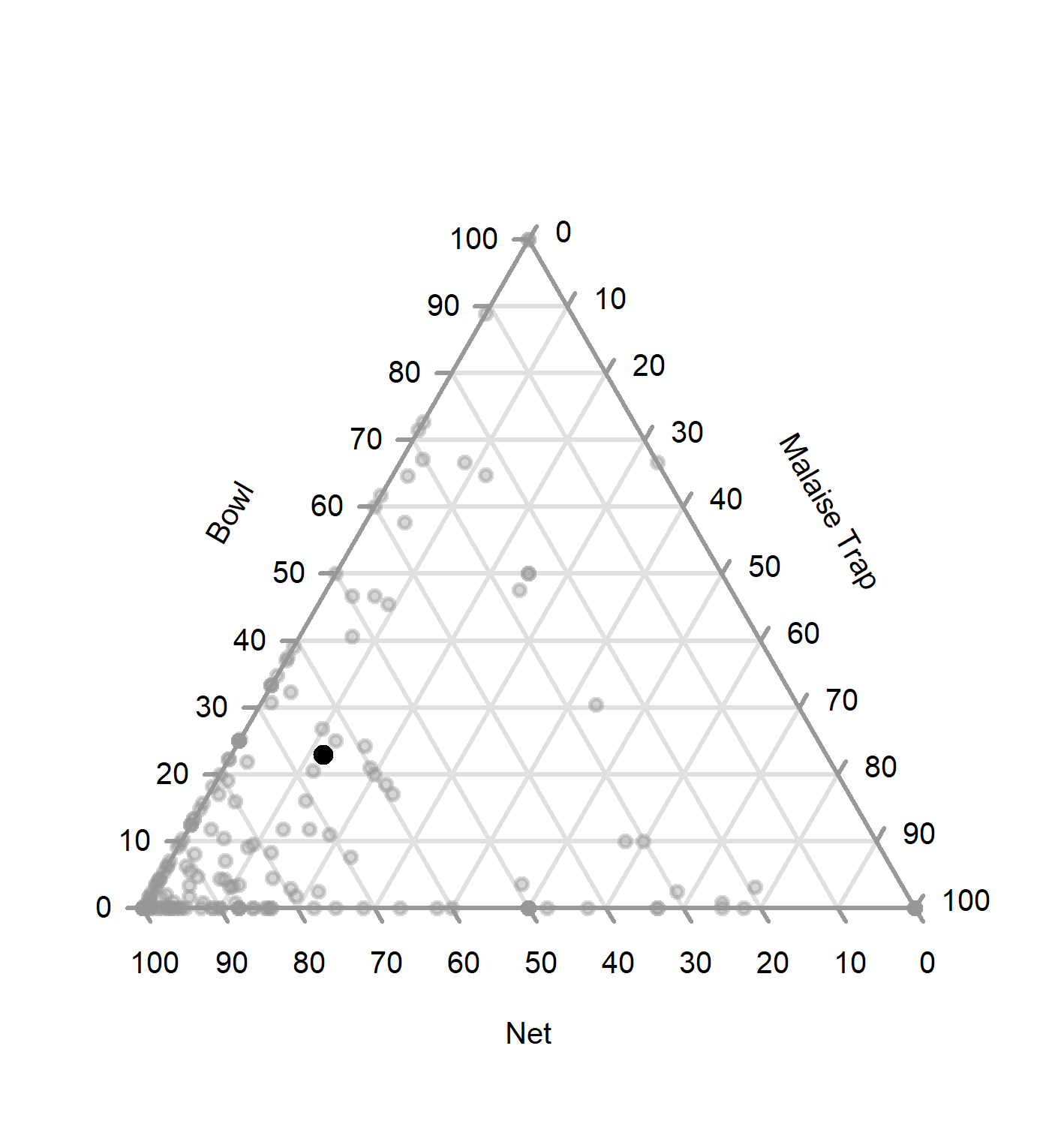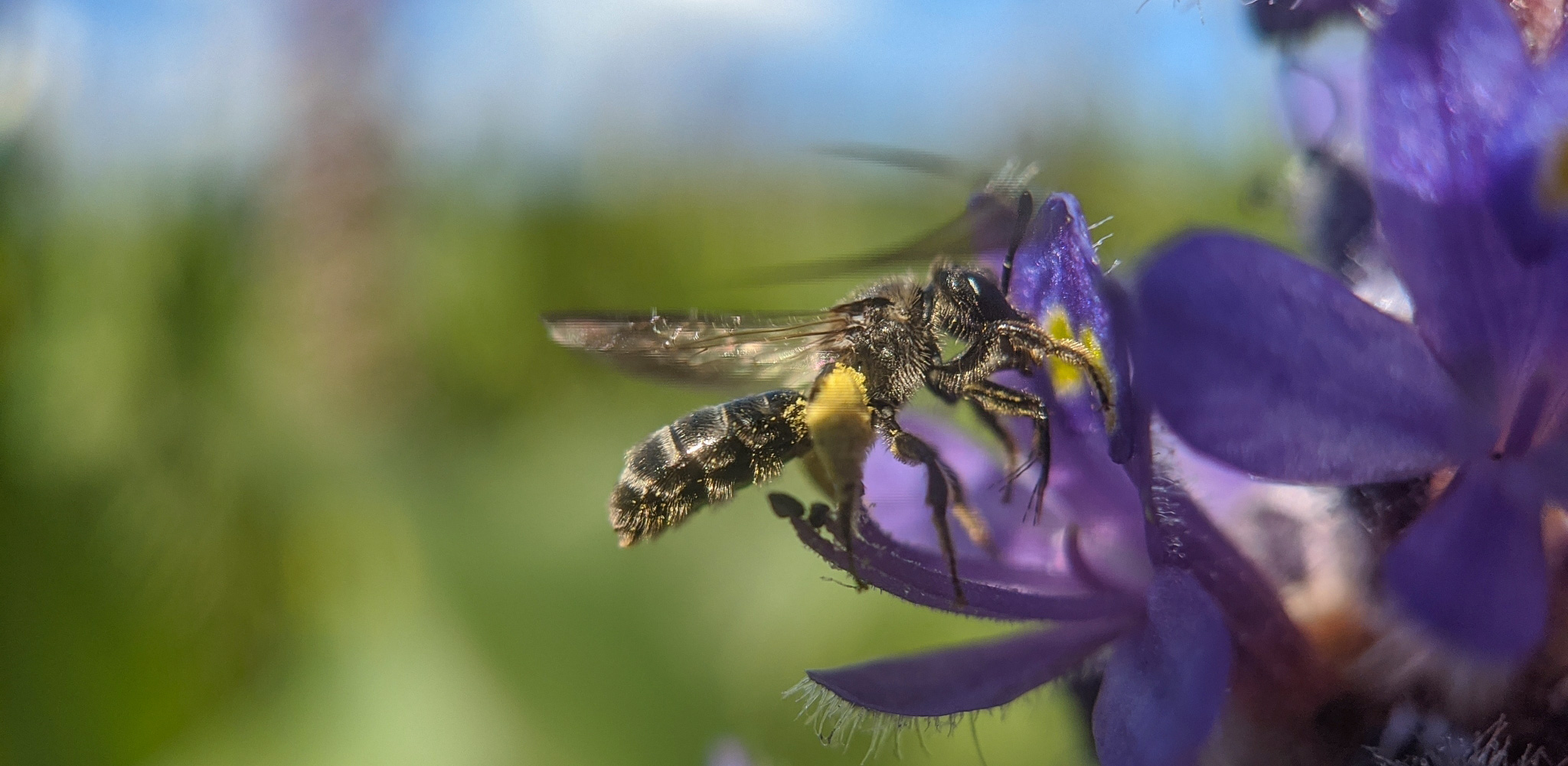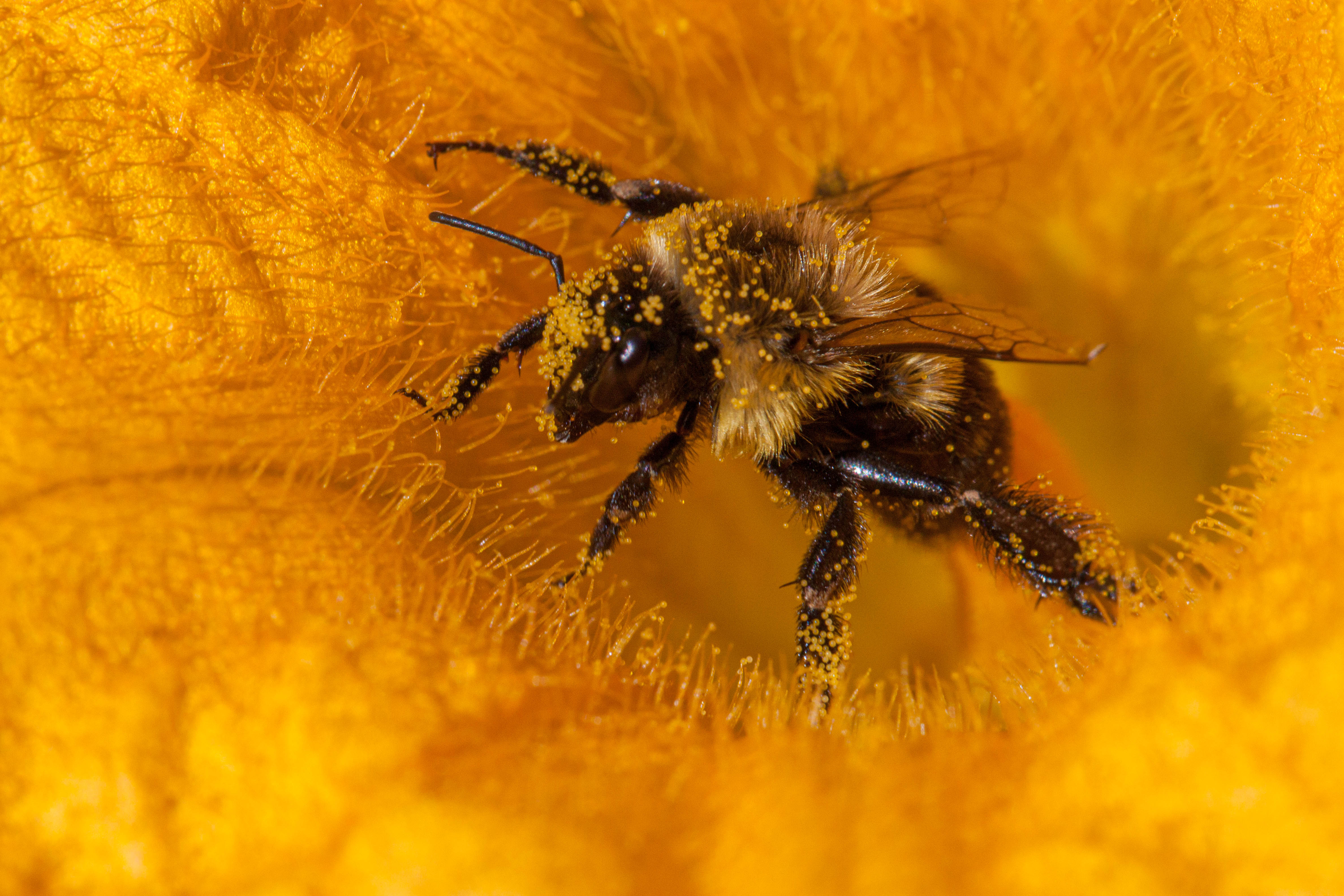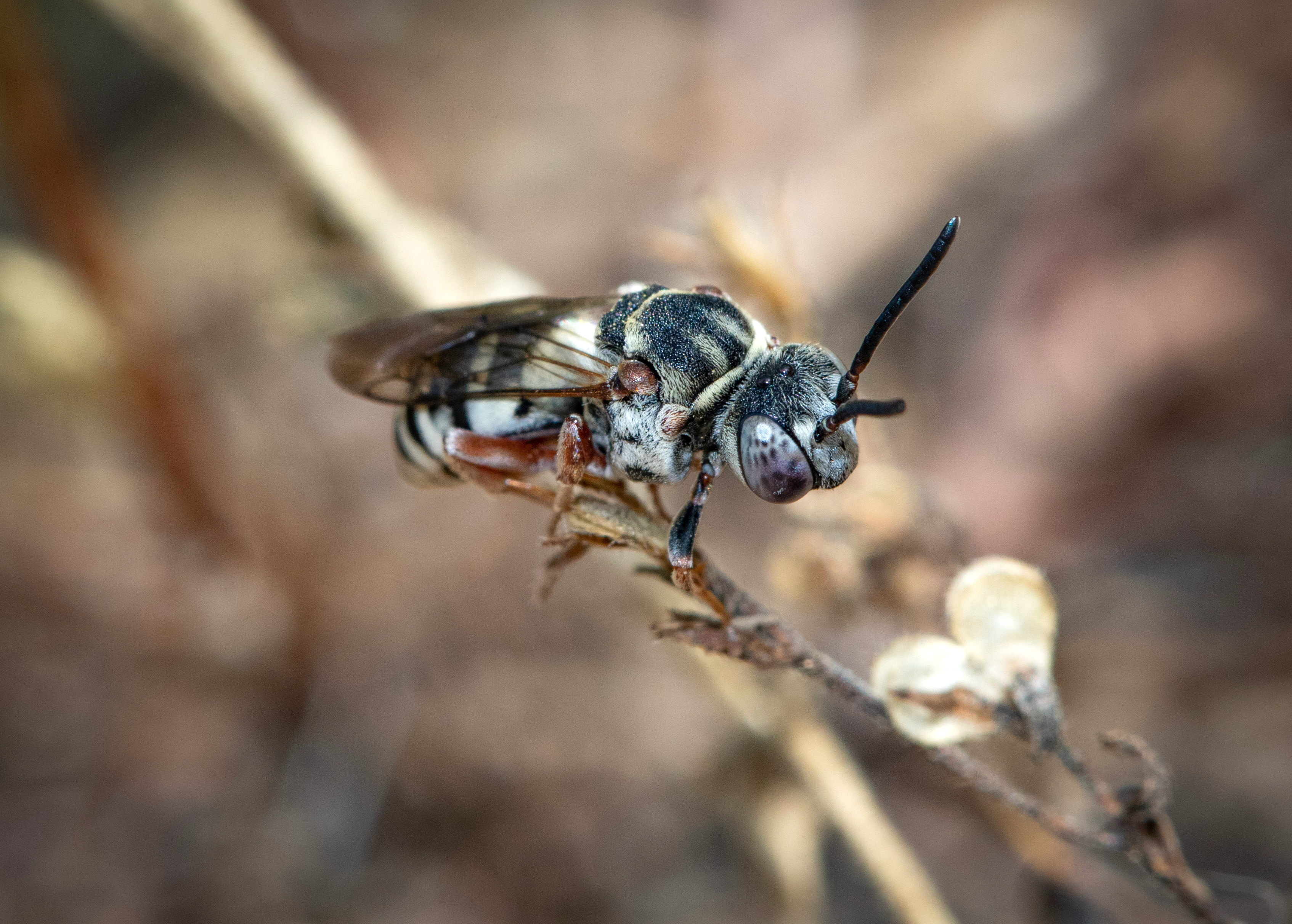The earliest known Vermont bee record is a Half-black Bumble Bee (Bombus vagans) collected in 1848. These priceless early collections allow us to peer back in time; however, only 158 species are known to have been collected prior to 1962. Today, after a decade of field work, Vermont’s known species list boasts over 350 wild bee species, with some information available on the relative abundance and distribution of each species.
There are certainly still species within the state that have not yet been documented, and the status of others remains unclear. Moreover, the bee community is far from static. Scientists predict that several introduced species known to occur in neighboring states may become established in Vermont in the near future. Changes within the native fauna are also happening, but remain largely undetected without population monitoring. A decade of bumble bee surveys show significant changes in the species composition of this group, with a more detailed analysis of this group in the works.
